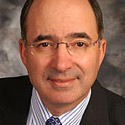02:45 PM
Is Multi-Asset Trading Dead on Arrival?
The landscape is littered with the ghosts of failed products, platforms, businesses and good ideas that were too expensive, not properly targeted or launched before their time. Is multi-asset trading, or the ability, from a single platform, to trade across products, one of these flawed concepts?
It's easy to blow off multi-asset trading as DOA. Trading across products violates almost everything I have learned, namely: Wall Street makes money through focus; systems developed for multiple purposes serve none; the industry's technologies follow P&L codes, which are vertically (by product) not horizontally (by customer) aligned; and if you make it too complex, nothing gets deployed.
But we shouldn't write off the trend so quickly. First, focus becomes less important as more products are electronically traded. Computers can focus on virtually everything simultaneously (given enough resources) and increasingly are calling the shots. While good human traders can outperform a machine, even the best traders can't keep up with machines trade by trade, day in and day out.
Investors also are changing the investment dynamic. Money managers are looking outside of traditional investments in record numbers. Where are all these managers finding outsized returns?
While some returns will come from holding equity, competition is forcing investors to segment and dissect various cash flows and risks, and attempt to arbitrage them. For instance, investors are playing the capital structure arbitrage game, as an equity isn't just a percentage ownership of a company -- it is a percentage ownership of the projected corporate cash flows influenced by corporate risk, product risk and industry risk. Cash flows can be modeled through fixed-income instruments (either via corporate bonds or even sovereign debt with derivative overlays), and various risks can be mitigated through sector indices, currencies plays, options of various flavors, credit default swaps and other derivative instruments.
Executing on these strategies, however, takes data, analytics and the ability to execute with precision across what has been a series of nonaligned markets and trading and processing platforms. But firms are reorganizing both their business and technology infrastructures to be more customer-focused as more trading strategies and customers look to develop cross-asset investment strategies.
Technology platforms are following suit. Firms and vendors are starting to develop analytics and trading platforms that can trade across asset classes and geography.
But developing a multi-asset trading platform isn't easy. It requires firms to understand their clients' needs and requires more-sophisticated services-based architectures that will allow easier integration of very disparate products, analytics and transactions across a wide number of vertically aligned back-end systems.
Today's multi-asset trading platforms are also most likely to be light-weight, front-end platforms that facilitate the analysis, decomposition, execution and reporting of multi-asset strategies. But many of these transactions are flowing from integrated front ends to traditional single-product, siloed back ends, as multi-asset back ends are more difficult and expensive to build and have less need, as most products are margined, settled, cleared and accounted for by product.
So is the idea of a new set of multi-asset, global trading platforms just wishful thinking or the next new wave? A bit of both. But while it certainly will take years, if not decades, to consolidate the mid and back offices across product and geography, within three to five years most firms will have customer-facing platforms that will trade across products, geography and trading styles.
Larry Tabb is the founder and CEO of TABB Group, the financial markets' research and strategic advisory firm focused exclusively on capital markets. Founded in 2003 and based on the interview-based research methodology of "first-person knowledge" he developed, TABB Group ... View Full Bio





















